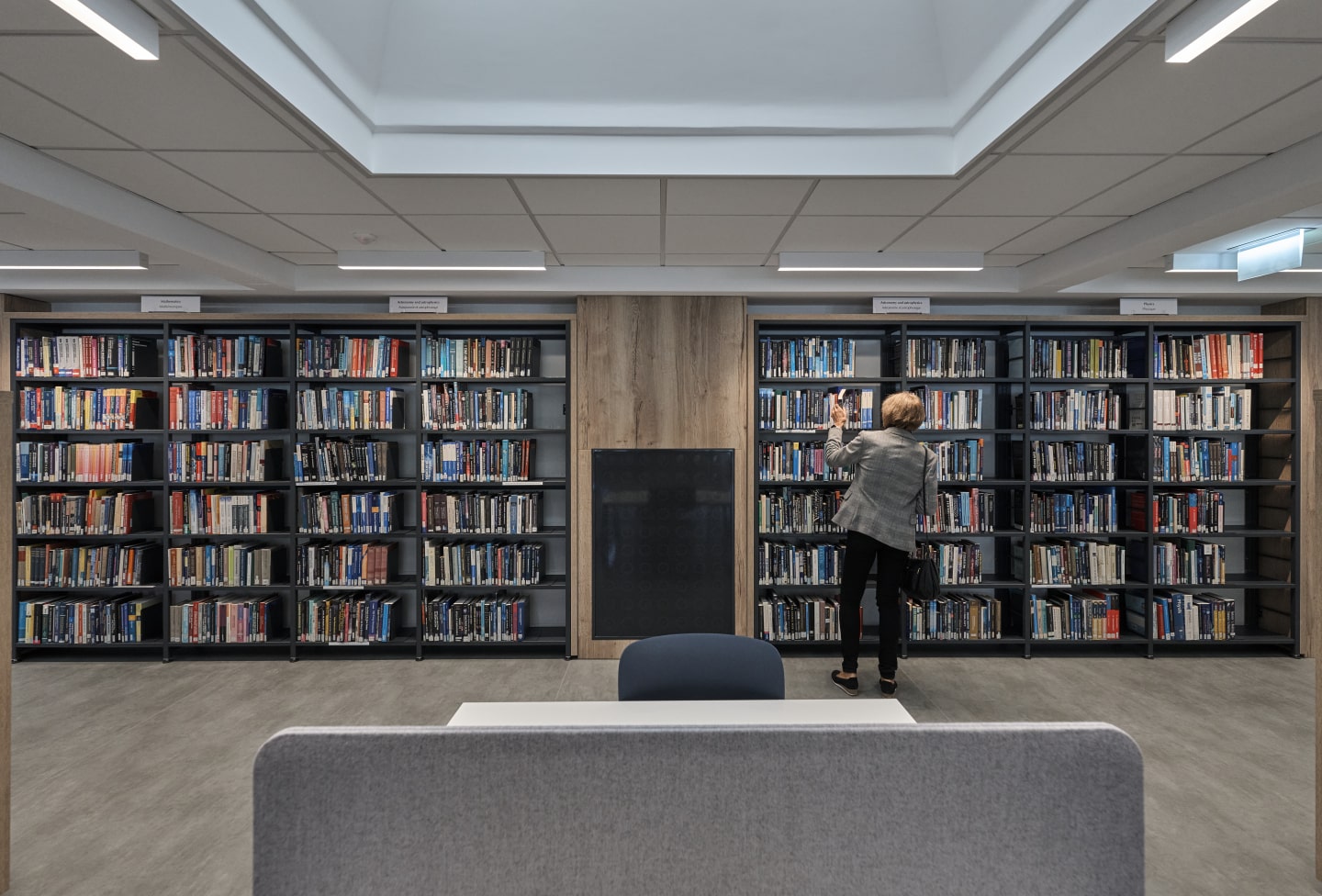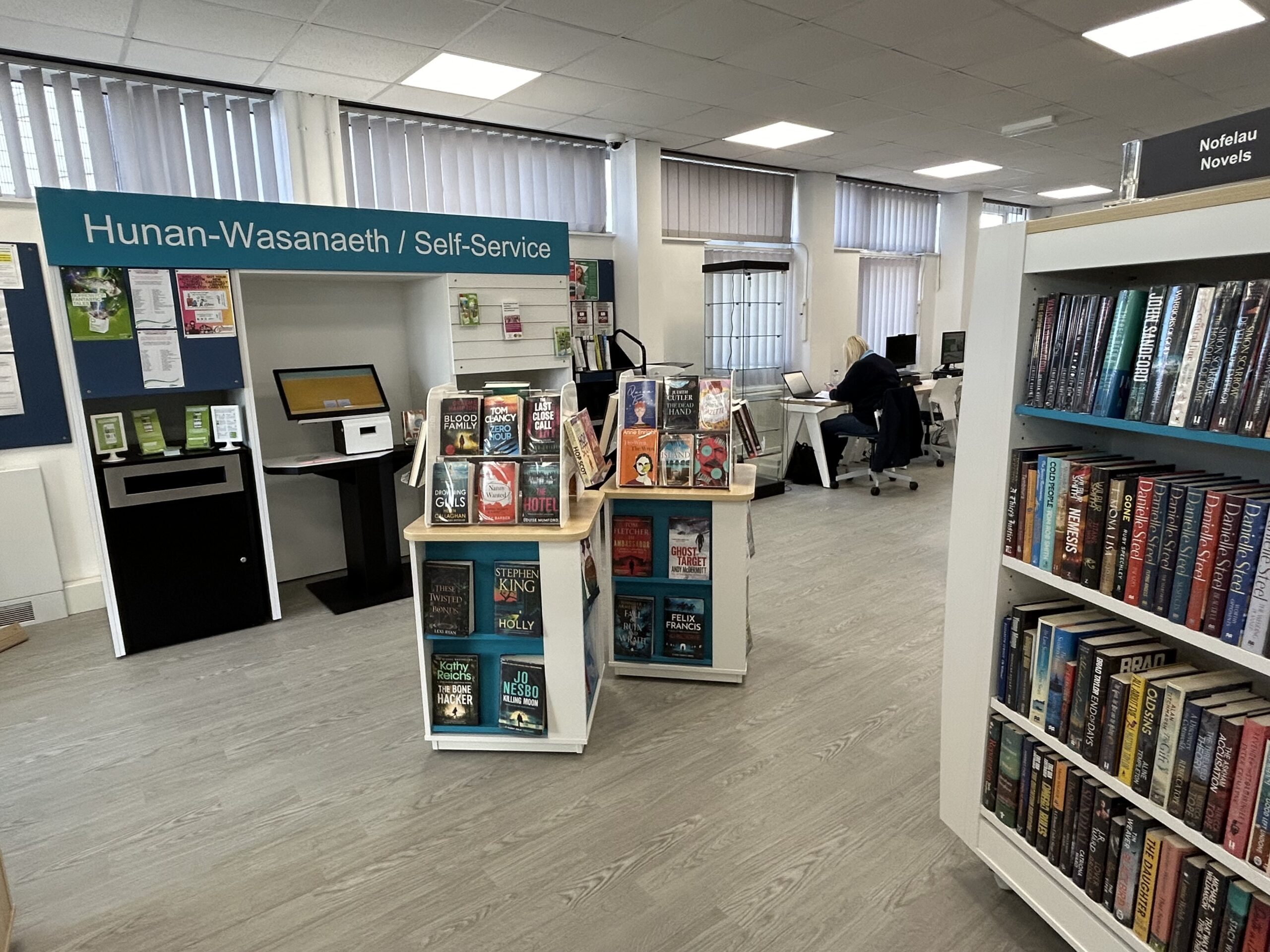Though the days of ‘silence in the library’ are long behind us, balancing social, interactive spaces with the need for quiet study remains a challenge. Like many other working and learning spaces, the library is constantly evolving and the acoustic requirements of these spaces is evolving in response. The design of good acoustics in libraries, contrary to popular belief, is not to lower noise levels, but rather to enable effective communication in areas where it is required, and reduce disruption in areas where concentration and quiet contemplation are needed.
What do the regulations say?
The guidance on acoustic design for libraries is relatively limited. There are two main documents which offer some criteria and limits:
1. BS 8233:2014 – Guidance on sound insulation and noise reduction for buildings
2. Building Bulletin 93 (BB93), 2015 – Acoustic design of schools: performance standards
The first of these briefly addresses libraries through a recommendation for ambient (background) noise level (normally resulting from external noise sources and building services), giving the design guide of 40-50 dBA. The second, used for schools, gives 45 dBA as the upper limit. Both documents give other ranges and limits for learning, meeting and work areas which are often found in a modern library. BB93 also gives guidance relating to the degree of reverberation (echo) within these spaces. This is given in the form of reverberation time (the time it takes an impulse sound like a balloon burst to die away), which should be less than or equal to one second.
How do we create a good acoustic environment in a library?
The first step is to think carefully about which discrete areas you wish to include. An library will cater for many areas, including bookstock, staff and study areas, meeting rooms or pods, collaboration areas and even, in some cases, auditoria or multimedia hubs. Just as some tasks, for example brainstorming, are not appropriate in spaces used for study, the acoustics that are appropriate to these areas may not be appropriate to others. Tasks that are sensitive to sound and disruption should be isolated, in as much as is practical, from others that might cause disruption.
Controlling the overall reverberation within the space is very important as excessive reverberation can lead to a build-up of noise levels when people are talking simultaneously, resulting in an uncomfortable environment. While books are highly absorbent, they are constantly being replaced with other media such as DVDs, podcasts and other e-materials and so their presence in libraries may diminish. In addition, many older library buildings are formed from highly reflective building materials which can cause the sound to bounce back into the room rather than being lost as heat.
The high ceilings found in some libraries increase the volume of the space which, in turn, increases the reverberation time (assuming these ceilings are not absorbent). Fortunately, reverberation issues are normally relatively simple to solve. Acoustic ceiling and wall absorbers which are effective at sound levels in the speech frequency range, when placed in the correct configuration and in the correct quantities, solve reverberation within the space, leading to a far more pleasant acoustic environment and reducing reverberant noise levels. In addition, if absorption is placed correctly, screens and other barriers can be made more effective.
Using physical barriers to redirect or ‘block’ sound is another method of controlling acoustics. Screening off areas with different uses gives both acoustic and visual cues to different zones. These barriers must be sufficiently high and wide in order to be effective, since sound easily reflects off adjacent surfaces and also bends around objects. Screens with solid cores and acoustically absorbent faces are the most effective for this purpose. Where more privacy is required, acoustic pods can be used for meeting spaces or even quieter, uninterrupted study. In some cases, they may be useful to create a “phone-calls-allowed” area where staff and library users might take telephone calls without disrupting others. It is important that both pods and screens are placed in the correct space for optimum performance. For example, a pod placed in an especially quiet area, close to potential listeners, will provide less privacy that one placed farther from listeners in a noisier or busier area.
Even with the optimal amount of absorption and blocking in place, the level of background noise in the library can make or break the acoustic environment. A common misconception is that noise levels should be as low as possible for acoustic control. However, the greater the difference in level between a sound and the background noise level, the greater the disruption caused by that sound will be. With this in mind, having background noise levels that are low enough so as not to be disturbing in themselves, but high enough to provide a constant stream of controlled sound can make other sounds less distracting and reduce disruption.
While the regulations mentioned above set limits to noise levels, there is also a minimum noise level that should be applied to areas where privacy is important. We generally recommend that this level be 40 dBA (this does not apply to teaching or media areas). The type of background noise is also important. Some sounds (such as an alarm clock) can be more distracting than others (such as rainfall), even if they are measured at the same noise level. It is most desirable to have an ambient sound that is broadband, steady and easily ignored, such as air-conditioning or masking noise. Sound masking systems are very useful in creating the right type of noise. Normally, speakers are installed in the ceiling and emit a constant, easily ignored sound. It is important that the sound masking system used has an adequate frequency response and produces the right type of noise for the environment. These systems can often be used to create zones with different levels of noise for different levels of privacy and acoustic control.
In summary, the rules for good acoustic design for academic libraries are:
1. Carefully zone the space and separate noise sensitive areas from noisy areas.
2. Use acoustic absorption to control reverberation and improve the performance of screens and barriers.
3. Use screens and barriers to redirect or block sound from travelling between different spaces and ensure that they have the adequate acoustic properties and are large enough to do the job.
4. Introduce the right type of noise in order to reduce distractions and improve privacy.
If all of these are applied, the library can be transformed from a quiet but inhibiting environment into a comfortable, flexible area, allowing for different kinds of work and learning under one roof.













